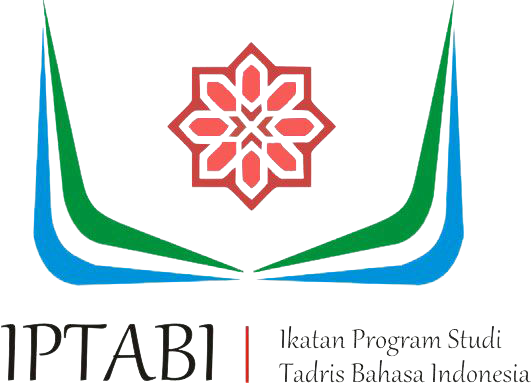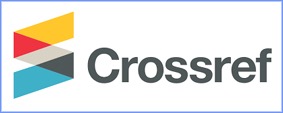Mengupas Kritik Sosial pada Kumpulan Puisi Mbeling Karya Remy Shylado melalui Rima, Tipografi, dan Enjambemen
DOI:
https://doi.org/10.29240/estetik.v8i2.13041Keywords:
Literature, Poetry, Remy Shylado, Social Criticism, Stylistics.Abstract
Research on social criticism in the collection of Puisi Mbeling by Remy Sylado is important because these aspects emerged as a response to the repression of the Orde Baru through the use of rhymes, spontaneous line breaks, and typography that deviates from conventions to become a symbol of rebellion against the oppressive social and political system. This study aims to examine social criticism in the collection of Puisi Mbeling by Remy Shylado through rhyme, typography, and enjambment. Qualitative methods were used in this study on 5 data sources on poetry that best represent social criticism, such as 1) Dendam pada Imperialisme-Kolonialisme, 2) Cintaku Tati, 3) Pelestarian Tradisi Birokrasi, 4) Atas Nama Rakyat, and 5) Catatan Kaki. These poems are included in the book Puisi Mbeling by Remy Shylado published by Kepustakaan Populer Gramedia in 2023 (second printing). The data collection and analysis techniques were carried out in several ways, namely 1) reading carefully, 2) collecting by marking data, and 3) presenting the results of data analysis in each line and stanza of the poem. The results of the study showed that the poet succeeded in peeling away social criticism in the collection of Puisi Mbeling through analysis of rhyme, typography, and enjambment in a brilliant and interesting way.
Downloads
References
Abrams, M. H. (1999). A Glossary of Literary Terms. Heinle & Heinle.
Adiyanti, R. M., Saadie, M., & Agustiningsih, D. D. (2021). Kritik Sosial dalam Kumpulan Puisi Negeri Terluka Karya Saut Situmorang. Jurnal Bahtera Sastra Indonesia, 3(1). https://ejournal.upi.edu/index.php/BS_Antologi_Ind/article/view/40954
Al-Ma’ruf, A. I., & Nugrahani, F. (2017). Pengkajian Sastra Teori dan Aplikasi. CV. Djiwa Amarta.
Anars, M. G., Munaris, M., & Nazaruddin, K. (2018). Kritik Sosial dalam Kumcer Yang Bertahan dan Binasa Perlahan dan Rancangan Pembelajarannya. Jurnal Kata: Bahasa, Sastra, Dan Pembelajarannya, 6(3 Jul). https://core.ac.uk/download/pdf/291695575.pdf
Bahasa, B. P. dan P. (2016). Stilistika. https://kbbi.kemdikbud.go.id/entri/stilistika
Bahasa, B. P. dan P. (2022). Remy Sylado. https://badanbahasa.kemendikdasmen.go.id/tokoh-detail/3323/remy-sylado
Darmawan, R. R., Munaris, M., & Samhati, S. (2018). Nilai Moral Kumpulan Puisi Mantra Sang Nabi Karya Edy Samudra Kertagama dan Implikasinya. Jurnal Kata: Bahasa, Sastra, Dan Pembelajarannya, 6(3 Jul). https://core.ac.uk/download/pdf/291695351.pdf
Hikmat, A., Puspitasari, N. A., & Hidayatullah, S. (2017). Kajian Puisi. Universitas Muhammadiyah Prof. Dr. Hamka.
Irmayani, N., Andriani, A., & Yunus, N. H. (2020). Analisis Kritik Sosial Kepada Pemerintah dalam Puisi Esai “Aborsi di Palippis” Karya Syuman Saeha. LINGUISTIK: Jurnal Bahasa dan Sastra, 5(2), 289–297. https://doi.org/10.31604/linguistik.v5i2.289-297
Jeffries, L., & McIntyre, D. (2010). Stylistics. Cambridge University Press.
Lafamane, F. (2020). Kajian Stilistika (Komponen Kajian Stilistika).
Leech, G. N., & Short, M. H. (2007). Style in Fiction, A Linguistic Introduction to English Fictional Prose. Longman.
Mutiara, A., Kemal, F., & Ghozali, A. S. (2024). Kritik Sosial dalam Puisi Esai “Kudengar Kota Itu Terpelajar (Jarik Simbok)” Karya Ana Ratri Wahyuni dan Implikasinya Terhadap Pembelajaran Sastra Indonesia. Seminar & Conference Proceedings of UMT, 253–259. https://doi.org/10.31000/cpu.v0i0.13058
Nurgiyantoro, B. (2022). Stilistika. Gajah Mada University Press.
Permana, M. D. A., Haerussaleh, & Huda, N. (2022). Analisis Citraan dalam Puisi “Perempuan yang Tergusur” Karya WS Rendra. ESTETIK: Jurnal Bahasa Indonesia, 5(2), 185–193. https://doi.org/10.29240/estetik.v5i2.4688
Pradopo, R. D. (2021). Stilistika. UGM PRESS.
Pradopo, R. J. (2009). Pengkajian Puisi. Gajah Mada University Press.
Raharjo, R. P., & Nugraha, M. P. A. S. (2022). Pengantar Teori Sastra. Perkumpulan Rumah Cemerlang Indonesia.
Rahmah, S., & Qur’ani, H. B. (2021). Kajian Strukturalisme dalam Puisi “Surat dari Ibu” Karya Asrul Sani. ESTETIK: Jurnal Bahasa Indonesia, 4(1), 125–142. https://doi.org/10.29240/estetik.v4i1.2368
Rohma, W. S. T., & Qur’ani, H. B. (2022). Kritik Sosial dalam Puisi “Berikan Aku Keadilan” Karya Fitri Nganthi Wani dan Relevansinya dalam Pembelajaran Sastra. JENTERA: Jurnal Kajian Sastra, 11(2), 244–257. https://ojs.badanbahasa.dikdasmen.go.id/jurnal/index.php/jentera/article/view/3361
Shylado, R. (2023). Puisi Mbeling. Kepustakaan Populer Gramedia.
Siminto, & Irawati, R. P. (2009). Pengantar Memahami Sastra. bukuKatta.
Suarta, I. M., & Dwipanaya, I. K. A. (2014). Teori Sastra. PT RajaGrafindo Persada.
Sugiyono. (2019). Metode Penelitian Kuantitatif, Kualitatif dan R&D. Alfabeta.
Sujarweni, V. W. (2021). Metodologi Penelitian. Pustaka Baru Press.
Sukmawati, E. K. (2020). Kritik Sosial dalam Dua Puisi Dikumpulan Puisi “Malu (Aku) Jadi Orang Indonesia (Majoi)” Karya Taufiq Ismail. Diskursus: Jurnal Pendidikan Bahasa Indonesia, 2(02), 160–170. https://doi.org/10.30998/diskursus.v2i02.6673
Wellek, R., & Warren, A. (1956). Theory of Literature. HARCOURT, BRACE AND COMPANY.
Wicaksono, A. (2014). Catatan Ringkas Stilistika. Garudhawaca.
Wulandari, R. A., Suyanto, E., & Fuad, M. (2015). Majas dalam Kumpulan Puisi dan Pembelajarannya di SMA. Jurnal Kata (Bahasa, Sastra, Dan Pembelajarannya), 3(3), 1–10. https://core.ac.uk/download/pdf/291695527.pdf
Yanuasanti, T. E. (2017). Diksi, Citraan, dan Majas dalam Kumpulan Lirik Lagu Banda Neira (Analisis Stilistika). Surabaya: Fakultas Bahasa Dan Seni, Universitas Negeri Surabaya. https://www.neliti.com/id/publications/243065/diksi-citraan-dan-majas-dalam-kumpulan-lirik-lagu-banda-neira-analisis-stilistik
Downloads
Published
How to Cite
Issue
Section
Citation Check
License
Copyright (c) 2025 Salwa Pramesti Maharani, Munaris, I Wayan Ardi Sumarta, Edi Suyanto, Siti Samhati

This work is licensed under a Creative Commons Attribution-NonCommercial-ShareAlike 4.0 International License.
Authors who publish with ESTETIK : Jurnal Bahasa Indonesia agree to the following terms:
- Authors retain copyright and grant the journal right of first publication with the work simultaneously licensed under a Creative Commons Attribution-NonCommercial-ShareAlike 4.0 International License (CC BY-NC-SA 4.0) that allows others to share the work with an acknowledgment of the work's authorship and initial publication in this journal.
- Authors are able to enter into separate, additional contractual arrangements for the non-exclusive distribution of the journal's published version of the work (e.g., post it to an institutional repository or publish it in a book), with an acknowledgment of its initial publication in this journal.
- Authors are permitted and encouraged to post their work online (e.g., in institutional repositories or on their website) prior to and during the submission process, as it can lead to productive exchanges, as well as earlier and greater citation of published work (See The Effect of Open Access).







